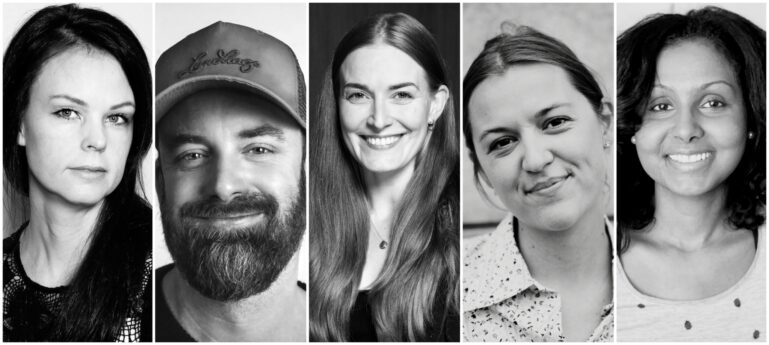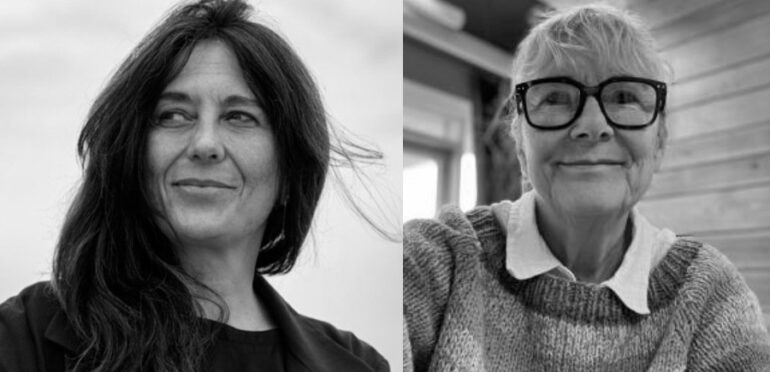WRITTEN BY: Lina Nystrand
"In production, it's not a question of if conflicts will arise, but when." Crisis management was one of the key themes of the course that “filled the gap” in producers' skills.
The first edition of the producers' course Filling the Gap concluded in mid-January, after a total of nine days of training 16 Nordic producers in situational leadership, conflict management, international co-production, and financing.
Filling the Gap is developed and led by Noemi Ferrer Schwenk, CEO of the consultancy firm Yes and Noe, and Tina í Dali Wagner, CEO of Filmgreb. Ferrer Schwenk has worked across Europe in production, financing, and as head of the international department at the Danish Film Institute, while Wagner has expertise as head of the National Film School of Denmark's postgraduate training department and founder of the Faroe Islands Film Institute. As longtime leaders of the Young Nordic Producers Club (YNPC), they also bring extensive experience in industry training.
“We have brought YNPC to Cannes for the last 14 years, and we had 300 Nordic producers going into our programme. That means 300 professional producers from the industry we could brainstorm with. [ ] So out of the YNPC came a lot of different ideas, but one idea came up three years ago – there was a gap we would really like to do research on.” Wagner says.
Ferrer Schwenk and Wagner conducted a survey, with support from Nordisk Film & TV Fond, the Danish Film Institute, and Nordisk Film Fonden. They did 45 interviews with Nordic producers, asking what are the key gaps in producers’ skills and training today.
“A lot of the people we talked to, especially the younger ones, had been challenged by the work they’re doing. The tasks, the amount, the leadership, and suddenly being thrown into something they maybe haven't been prepared for,” Ferrer Schwenk says.
The primary needs expressed by the producers revolved around leadership, conflict management, co-production, and financing. There was also a clear demand for time-efficient courses tailored to producers, Wagner and Ferrer Schwenk explain.
In response, they created Filling the Gap. The first module took place in October 2024 in Gothenburg, focusing on situational leadership. In November, the programme moved to Copenhagen, covering international co-production and financing. It concluded in mid-January 2025 in Oslo with a module on conflict management, which also included a unique session on how to give notes.
A core philosophy for Wagner and Ferrer Schwenk has always been to “work from the inside and out” – using industry expertise, channeling it outward, and turning theory into practice. Tina Wagner explains how this approach was applied in Filling the Gap:
“For every single activity we did in the course, we asked the producers to write down a dilemma. Then we would invite very experienced people from the industry to bring it from theory down into their working space.”
She also highlights that the participants don’t bring a project to Filling the Gap.
“We want them to put the project aside, because we want to get them out of their comfort zone and try something new, and be open.”
Jenni Jauri (FI) from Silmu Films, Filson Ali (SE) from Camera X, Sunna Guðnadóttir (IS) from Bjartsýn films, Eirik Smidesang Slåen (NO) from Fenomen Studios, and Anna Dammegaard Søllested (DK) from Snowglobe were five of this year’s participating producers.
Why did you want to participate in Filling the Gap?
Sunna: I attended the Young Nordic Producers Club in Cannes in 2019 at the start of my career, and benefited greatly from the workshop. So when I heard that Tina and Noemi were organising another workshop – this time focusing on leadership training and conflict management – I was immediately interested in applying. The timing was perfect, as I have a few projects in development, but no imminent productions, giving me the headspace to fully engage in this experience without being constantly with my head somewhere else. Conflict management is a topic I find particularly relevant and essential in our industry. In production, it’s not a question of if conflicts will arise, but when. Also given the high-pressure and fast-paced nature of our work, we rarely take the time to focus on developing ourselves as leaders. Yet, leadership is not just a natural talent – it’s a skill that must be cultivated over time with the right tools. That’s why I saw Filling the Gap as an invaluable opportunity to grow and improve as a producer and leader.
Filson: As a filmmaker and business owner, I was drawn to Filling the Gap because one day, I would find myself leading a team on set, and the next I would be alone, writing, budgeting, or planning the next steps for a project. Finding a delicate balance between artistic vision and effective leadership was something I was looking for both for my personal and professional growth. This industry thrives on collaboration, where growth comes from experiences and connections, but it also demands a strong sense of individual responsibility. That's why I knew I couldn't pass up this course.
Anna: I wanted to participate in order to continuously develop my abilities and build on my Nordic network. I was looking to develop a more informed and methodological approach to leadership specifically, as opposed to relying on intuition and learning-by-doing methods.
What skill or insight from the course do you think will have the biggest impact on your career moving forward?
Eirik: It may sound a bit pompous, but it has actually directly affected how I organise my projects, both how I plan some of them, but also how I wish to interact with people as a producer. Furthermore, I have gained some very specific tools, which can help me avoid conflict. And if they emerge anyway, I feel more robust and ready to handle them. Now I also have a better understanding of how a good leader navigates in the role of a producer, which very often feels like being on a rollercoaster. I see myself as a very creative producer, but as I also write some of the projects myself, I think I even have a better understanding of how to juggle these two very different roles.
Jenni: It was mind-blowing to learn so much about myself and how I come across to other people as a leader and a person. Maybe the biggest change in perception was to internalise that I can consciously alter my leadership style according to situations and people. From now on I will pay a lot more attention to how I onboard people and lead groups throughout the different stages of a project.
Filson: The biggest takeaway from the course was understanding the importance of a clear leadership philosophy in the film industry. It's a tricky business, so staying focused on your goals is essential. As a woman and person of colour, I'm passionate about fostering growth, inclusion, diversity, and collaboration as part of a collective effort. After all, this industry thrives on teamwork. With that in mind, this course helped me better understand my role and how I can contribute to the collective growth alongside my colleagues, both local and international.
Anna: Insights into the interplay between healthy leadership and artistic ambition, as well as the balance between decision-making and empowering others to do so. The course was structured really well, focusing on leadership in the first module – defining your profile and awareness of individual leadership practices – which immediately produced a sense of connection and trust among the participants. Through self-reflection and sharing insights with each other, we were able to get to know one another quite well from the beginning, building a foundation that enhanced the learning experience throughout the course.
How do you think the connections you made with the other Nordic producers will help with future collaborations?
Sunna: The connections I made during the three modules will be invaluable, not just for future collaborations, but also for the friendships and professional support network we built. Having the ability to reach out to colleagues outside my usual circle for advice, feedback, or even just support is incredibly valuable. I believe I speak for most, if not all of us, when I say that a close bond was formed, and we will always keep the door open for each other – both professionally and personally.
Jenni: I feel that the group formed quite a unique bond, and the level of trust, empathy and respect towards each other was remarkable. I'm sure that many of us will work with each other sometime in the future, and it helps that now we all share some of the same concepts and tools of interacting and working together.
Eirik: I'm already discussing a potential co-production with one of them, but I also feel we have a group that I may call upon if I have concerns, dilemmas or in other ways need advice from someone outside my own office. And I will of course try to be the same resource whenever needed from someone else in our group. In itself, that's a wonderful outcome, not least in an industry where being vulnerable is very difficult.
Full list of participants in Filling the Gap 2024-2025: Jeppe Wowk (DK), Adomeit Film / Freelance, Anna Dammegaard Søllested (DK) Snowglobe, Amalie Lyngbo Quist (DK), Beo Starling, Emma Poppe (DK), Profile Pictures, Stephanie Wiese (DK), Rocket Road, Laura Valentiner Bose (DK), Monolith Studios, Jenni Jauri (FI), Silmu Films, Sunna Guðnadóttir (IS), Bjartsýn films, Marie Lagerkvist (SE), Eleven Stories, Liselotte Persson (SE), Gråklippan, Filson Ali (SE), Camera X, Anna Bryvald (SE), Silver Films, Jonas Bruun (NO), Storm Film / Skala, Eirik Smidesang Slåen (NO), Fenomen Studios, Ingvil Eivemo (NO), In the Mood Film and Louise Beyer (NO), Storm Film / Skala
Noemi Ferrer Schwenk and Tina í Dali Wagner hope for an annual Filling the Gap course, driven by the strong interest from producers.

